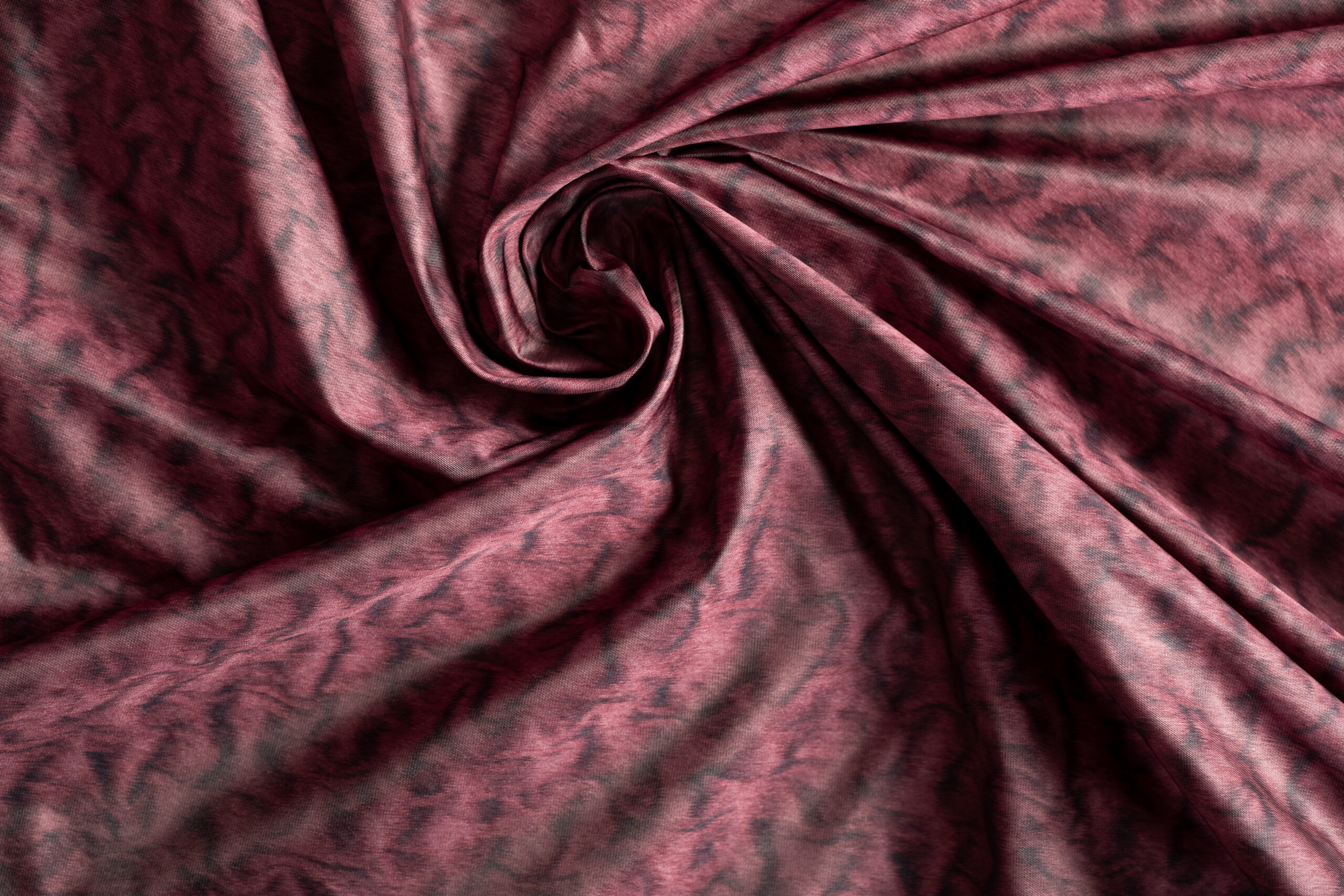
Crèpe de chinè is a much-loved fabric in French fashion, but it was created in the Far East. It is a light and elegant product, used by fashion houses and stylists to give movement and texture to their lines. The different uses and different types provide a versatile fabric, used both in the fashion sector and in the field of design. This versatility is accentuated by the use of modern technologies such as that of the Transfer Card. How many types of crepes are there? What are their peculiar characteristics?
Crèpe de Chinè: what is it?
The name crèpe indicates a group of fabrics that can be very different from each other depending on the material used or weight. What all these products have in common is the frizz effect, precisely from the French crèpe, which gives a wavy, undulated but also grainy effect to the touch. The characteristic wave movement is obtained by using crèpe twisted yarns. Two methods are used to accentuate the movement, in the first case strands with high and opposite torsion are used, in the second case, in the composition phase, weft and warps are made up of opposite tension yarns that follow one another. Specifically, the crepe de chinè unlike other fabrics uses crèpe twist yarns only in the weft. This particular composition provides a light and fluffy fabric, with a soft texture and an elegant drapery. The material dedicated to the production is silk but recently, it is possible to witness the creation of crepes with the use of wool threads, synthetic fibres or alternating the latter with silk. The different types of crepes Different fabrics, different uses, as many types of crepe. Depending on the product you want to make or pack, you prefer one fabric rather than another. The main varieties are:
- chiffon: a transparent and thin fabric, very lightweight that uses crèpe twist yarns both in the warp and weft.
- crèpe Georgette: like chiffon, it is lightweight and thin but remains a little rougher to the touch.
- crèpe de chinè: it is obtained using alternating twist weaves that give life to a compact fabric perfect for drapery.
- crèpe marocain: a thicker weft thread than the warp that creates a heavier fabric and horizontal wavy ribs.
- crèpe satin: unlike the previous products, the latter is woven in satin rather than canvas and this determines a soft and shaved fabric but with a shiny and opaque side.
- wool crepe: also known as crepella, it uses wool threads of various weights that still manage to give life to a light product.
Crèpe de chinè: the various uses
The crèpe de chinè is one of the simplest silks to sew, in fact, thanks to the texture and the orange peel effect, the fabric does not slip under the sewing machine. For this reason, it is preferred by both large fashion houses and small tailoring shops to create blouses and blouses, skirts, trousers and dresses. Used for both day and evening wear, stylists choose it for its lightness and elegance that allows them to make clothes suitable for any occasion. Also available in an elasticated version, it is particularly useful for those garments that must remain on the body line even during prolonged use. A very popular fabric especially for the production of women’s clothing and widely used in the field of lingerie. Usually crèpe de chinè is piece-dyed, but especially for the realisation of scarves patterned prints are preferred.
The new horizon of crèpe de chinè: the Carta Transfer
As has been noted, crepe is widely used in the field of fashion and furnishings but the great technological progress of the last few decades also requires an evolution of the creative sector. The design and fashion industries have therefore begun to exploit technical innovations and have applied them to their sector. This is the case of the Carta Transfer, a technology that gives fabrics designs and colours that are impossible to obtain with traditional methods. Unique colours, lines and patterns enhance clothing as much as the interiors of homes, hotels and luxury properties. Even with this technique, it is possible to reproduce the wood grain with eco-sustainable applications on windows and PVC materials. Whether you are trying to reproduce an animalier pattern on a fabric such as crèpe de chinè or you want to obtain a realistic wood effect for a property, it is always better to rely on a unique company with patented technologies such as Menphis SPA.

